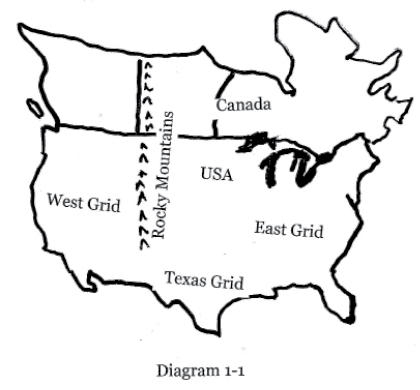What happened? Why did such a large portion of the grid black out while other parts of the grid stayed in service? How did our operator know that the grid was close to collapsing? Who are the people that control the grid, and how is it controlled? And more fundamentally, what is the grid? These questions are extremely important to our society and our way of life since we are so dependent on electricity.
The grid is a huge connection of electric power lines, generators, transformers, and other electrical equipment. The grid exists to take the electric-power output from generators and then deliver that power to loads. The grid that we know today serves us extremely well, to the point that we have structured a large part of our lives around its existence. We rarely consider the consequences of total grid failure. And yet most people probably know more about what it means to “live off the grid” than what the grid is.
Actually, there are a number of grids in the world today. In the United States (the forty-eight contiguous states, that is), three grids are in operation. Most of Canada and parts of Mexico are also included in those grids. For now, think of a grid as a single large machine. In fact, the electric grids are the largest machines made by humankind. (In saying this, I offer my apologies to the people who built the Large Hadron Collider, or LHC, in Europe, which is often mentioned as the largest machine ever made by humankind. I have heard or read that statement multiple times, but I must disagree. The LHC is 27 kilometers in circumference. The eastern grid is interconnected from Canada to Florida, moving west to the Rocky Mountains.) The three grids in North America cover a huge area (see diagram 1-1), serve over 330 million people, and have more than two hundred thousand miles of transmission lines (these are just the high-voltage lines; distribution lines are far more numerous).

Diagram 1-1: The Three Grids of North America
The Three Grids of North America